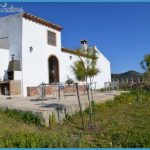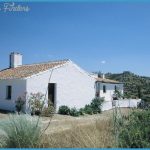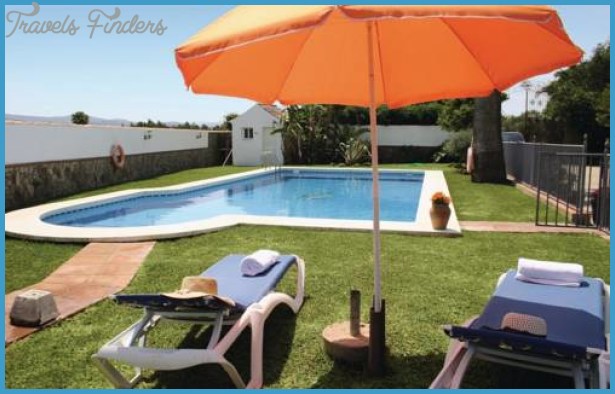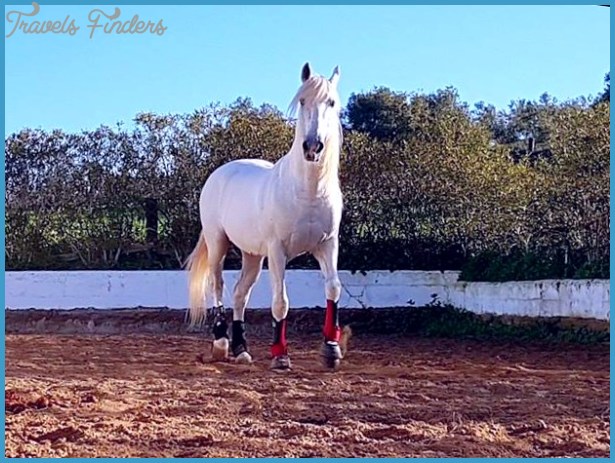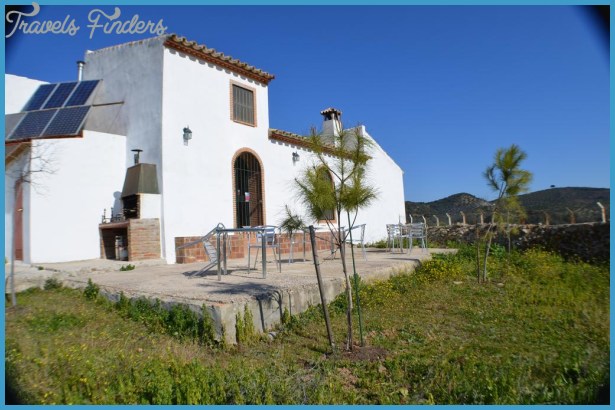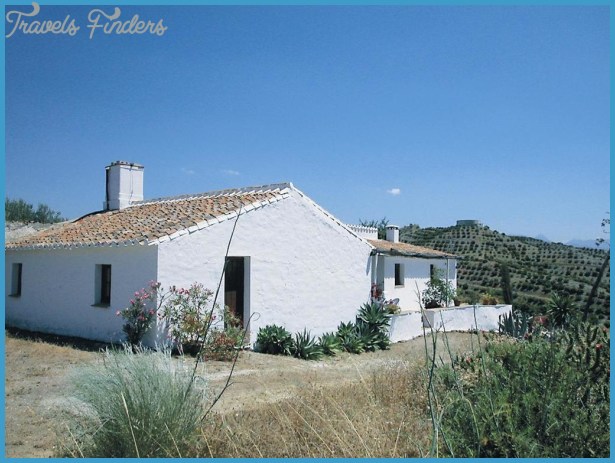Dehesa trees are never left to grow old naturally. They are regularly pruned, the cut branches left on the ground for livestock to graze their leaves. Larger branches are often sold to make charcoal. Pruning is done to encourage the trees to branch outwards rather than upwards, increasing their shade-bearing area, a necessity for livestock in the blistering sunshine of an Extremaduran summer.
But the most economically productive component of dehesa farming comes from the Cork Oak trees themselves. Their naturally thick, corky bark – built-in fire protection – gradually loosens from the trees and can be harvested about every decade without causing the tree any harm. It is a skilled job, carried out using a special curved axe – a machado – wielded with extraordinary precision when you see the task being done. Where Cork Oaks abound in the dehesa, the dark orange-red stems of recently harvested trees are a striking and characteristic sight. These trees can live for 200-300 years and be harvested for their cork many times over. Although much of the lower quality cork is used to make products such as wall tiles and sports equipment, the best quality goes to make wine bottle corks. Since Dom Perignon first introduced cork to seal his now famous champagne bottles, the wine industry worldwide has always used them to bung a good proportion of the 20 billion or so bottles sold each year. And Spain and Portugal produce 80% of the world’s cork.
If, like me, you’re an avid wine drinker, you will be more than aware that many of the corks that once stoppered every bottle you purchased have been replaced. Some at the cheaper end of the market contain a plastic bung; many others – especially everyday drinking whites – simply have a plastic-lined screw cap. And the prevalence of these screw caps is why I’m bothered about the future survival of the dehesa. Today, cork stoppers only fill the necks of maybe 60% of wine bottles, mostly those at the more expensive end, more so for red wines and for any wines that need to mature in the bottle. Why has this happened? The answer is cork taint. Some wines, when you open them, have a musty smell, usually described as a corked’ wine. The mustiness is apparently due to a chemical called TCA produced by moulds growing within the pores of the cork combined with traces of the bleach used to sanitise the bung. So much is generally agreed.
A lot more is not. Wine experts and wine industry insiders quote a wide array of figures about how commonplace – or not – cork taint actually is, from a low of less than one bottle in a hundred to as many as one in twelve. Much of the variation might be explained at least partly by whoever is doing the tasting, how well they recognise the taint and how bad that taint really is. A severely corked bottle is obvious; it has a foul, wet carpet odour. But very slight taint is often a product of a wine taster’s nose; after all, discerning wine quality is an art not a science. Anyone who reads a wine column with its flamboyant references to a plum palate; hints of ripe and sour cherry’ or a sexy bouquet’ will know what I mean.
Even though the cork producers have been fighting back by sterilising their corks more thoroughly and by promoting alternative cork products, a major slump in the quality cork market wouldn’t only jeopardise the jobs of around 40,000 cork harvesters and processors. Production of the plastic or aluminium (for the caps) alternatives consumes large amounts of chemicals and energy – replacing a natural and biodegradable product. If sustainability is ever to be translated into practical reality, cork would win every time.
So if significant price drops hit the cork industry, it could cause dehesa farmers to go out of business or to consider alternative crops. Luckily for the dehesa wildlife, there isn’t much that you can grow here and make a profit from. The soils are notoriously thin and poor while the climate – cold winters and arid bakehouse-heat summers – make that extremely difficult.
But there is one crop that can prosper: eucalyptus trees (mostly Australian natives) grow well in the climate of the western Iberian Peninsula. But, because of their volatile oil content, they are an extreme fire hazard. And as a wildlife habitat, eucalyptus is a disaster; it supports virtually no animals – vertebrate or invertebrate and few plants grow on the forest floor under the trees. Although it attracts much lower government subsidies than planting the native dehesa trees, the attraction is that eucalyptus can be harvested within a decade. Quality cork cannot be harvested until an oak is nearly half a century old.
Finding out what is happening to the dehesa as a result of the drop in the use of cork stoppers is fraught with problems. There appear to be no reliable statistics and measuring the extent of dehesa is problematic: it is hard to know when the trees become so widely spaced that the dehesa has transformed into open plain, or so much more densely spaced that they merge into what is more aptly described as forest.
Dehesa Vacations Photo Gallery
National and regional laws in Spain and Portugal forbid the felling or digging out of dehesa/montados trees. Authorisation to do so is rarely given, except when the trees are dead or diseased. While rumours abound that trees are sometimes removed or felled under dubious circumstances to make way for more productive crops or for real estate, travel large parts of this vast area and there is not much evidence of dehesa tree felling. It would, though, be quite difficult to know whether treeless plains were, until recently, dehesa. Planting young trees to produce the dehesa sentinels of the future isn’t commonplace either though.
More important, perhaps, is the protection that the two countries, as Member States of the European Union, are giving to large areas of dehesa under the EU’s Habitats and Wild Birds Directives. That protection is not intended to cover all of the dehesa but a representative proportion of the best parts.
The protection of this fabulous wildlife habitat and its sustainable form of farming depends on its farmers being able to make a living out of it. So, get at it! Try to drink wine from bottles with real corks. Use only natural cork if you bottle your own wine. Buy cork products. And eat jamon de bellota; as much as you can afford! Surely that’s not too difficult is it?







